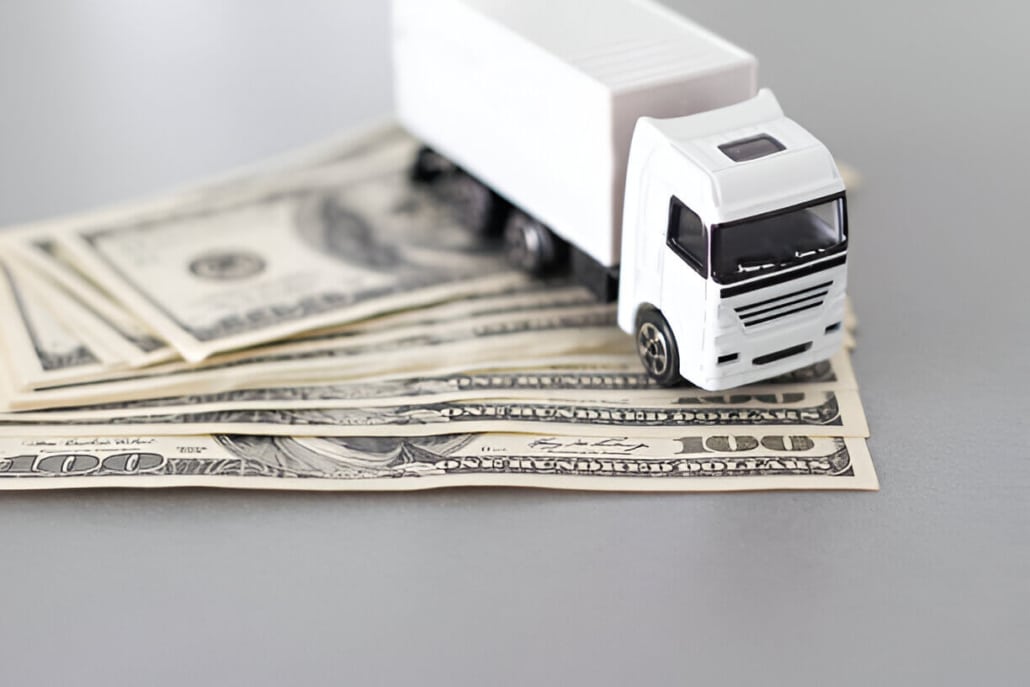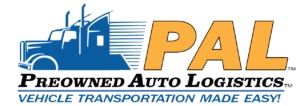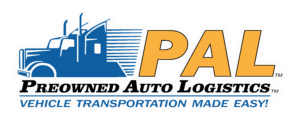Debunking Myths about the Vehicle Shipping Bill of Lading
Debunking Myths about the Vehicle Shipping Bill of Lading
When transporting your car, a single document stands between you and potential financial loss: the bill of lading.
This essential paperwork simultaneously functions as your receipt, contract, and comprehensive condition report. Unfortunately, many customers don’t pay much attention to this document, unknowingly risking thousands in potential damages.
This guide explores the auto transport bill of lading, explaining its significance, financial importance, and proper usage to safeguard your vehicle throughout transport.
What is a Vehicle Shipping Bill of Lading?
A vehicle shipping bill of lading is a legally binding document establishing the agreement between you and the auto transport company. Required by the Federal Motor Carrier Safety Administration, it’s mandatory for all vehicle shipments. Without it, your shipment lacks legal protection, and carriers risk penalties.
The BOL includes:
· Your personal information
· Vehicle specifications
· Pickup and delivery locations
· Transport timeframes
· Service fees and payment terms
· Vehicle condition report
· Terms and conditions
· Signatures from both parties
A multifunctional document
Usually printed on multi-copy paper, the BOL governs every aspect of your vehicle’s transport, serving these functions:
· Contract: Establishes the legal agreement, detailing responsibilities and consequences if not fulfilled.
· Receipt: Confirms the carrier has your vehicle, establishing responsibility during transport. Without it, you lack proof of entrusting your vehicle to a specific carrier.
· Condition report: BOL provides detailed information about the state of merchandise at the time of pickup, creating an official record that all parties can reference if disputes arise later in the shipping process.

Importance for both shippers and carriers in auto transport
The bill of lading protects against false claims and helps carriers with unwarranted complaints, usually including diagrams and descriptions.
Mutual benefits
For customers, the BOL:
· Defines purchased services and documents vehicle condition
· Provides evidence for insurance claims
· Establishes delivery expectations and timeframes
· Outlines rights if service issues arise
· Creates a legal paper trail
For carriers, the BOL:
· Defines responsibilities and liability limits
· Protects against unsubstantiated damage claims
· Establishes payment terms
· Shields from claims about pre-existing damage
· Shows regulatory compliance
· Builds trust through documentation
This mutual accountability reduces disputes and provides a framework for resolving issues.
Common Myths about the Vehicle Shipping Bill of Lading
Myth 1: The bill of lading is just a receipt
Many see the BOL as a simple receipt needing an urgent signature, undervaluing its importance. Unlike simple acknowledgment receipts, vehicle shipping BOL comes with complexity and higher stakes.
Reality
The BOL is a legally binding contract defining your relationship with the transport company. It specifies:
· Purchased services (transport type, additional services, special handling)
· Vehicle’s pre-transport condition (existing damage, operational status, cosmetic issues)
· Carrier responsibilities (vehicle security, route adherence)
· Liability limits and claim procedures
· Delivery expectations and protocols
Courts uphold BOL terms, making it hard to claim ignorance after signing. Hasty signing may prevent damage recovery by agreeing to pre-existing damage, potentially costing thousands in repairs.
Remember, the BOL overrides verbal promises unless documented. All agreements must be in writing before signing.
Myth 2: Verbal agreements override the written BOL
Some customers think verbal promises from sales reps, dispatchers, or drivers override written terms, leading to disappointment when promises aren’t honored.
Reality
The written Bill of Lading helps avoid the issue of unfulfilled promises or disputes by presenting written agreements. This follows the “parol evidence rule,” which blocks outside evidence contradicting a contract.
Protect yourself
· Ensure all important agreements are in writing on the BOL.
· Add specific notes or addendums and have both parties initial them.
· Don’t accept vague assurances for later concerns.
· If something isn’t on the BOL, get it confirmed by email.
If a representative makes promises that differ from standard terms, ask them to add these to the document before signing. Reputable companies will accommodate reasonable documentation requests. Be wary of carriers who refuse to put promises in writing—they likely won’t honor them later.
Myth 3: You can dispute damage after signing
Many customers believe they can sign the BOL, take their vehicle home, discover damage later, and file a successful claim. But vehicle shipping follows strict rules emphasizing conditions noted at delivery.
Your signature confirms you received your vehicle in acceptable condition, releasing the carrier from liability for visible damage found later. Most BOLs state: “I have received the above-described vehicle in good order and condition except as noted.”
Claim denial reality
Carriers deny many post-delivery damage claims when customers fail to document them on the BOL. Even when you present evidence, the signed BOL usually prevails legally, making a thorough inspection at delivery essential.
The exception is for “concealed damage” not discoverable during normal inspection. You typically have 24-48 hours to report these issues, with a higher burden of proof. This applies to damage undetectable during a reasonable inspection, such as:
· Internal mechanical issues during extended operation
· Damage needing specialized equipment to inspect
· Electronic failures not immediately apparent
To claim concealed damage, you must:
· Report within the carrier’s deadline (usually 24-48 hours)
· Provide evidence the damage occurred during transport
· Show why it couldn’t have been discovered during inspection
· Document with photos and professional assessments
Even with these steps, concealed damage claims face scrutiny and are rarely approved compared to documented delivery damage.
Thorough vehicle inspection protocols
At delivery:
· Inspect the vehicle completely, even in bad weather
· Request better lighting if it’s a night delivery
· Check all exterior surfaces, including the roof and undercarriage
· Look at all glass from different angles for scratches or chips
· Check for fluid leaks underneath
· Test all mechanical functions, including lights
· Compare to your pre-shipping documentation
· Document any new damage before signing
Most carriers want to handle legitimate claims, but once you’ve signed a clean BOL, their hands are tied. A proper inspection protects everyone involved.

Myth 4: The BOL is only important for the carrier
Many think the Bill of Lading only protects the carrier, but it ensures accountability for both sides. For customers, the BOL provides:
· Proof of your service agreement
· Record of pre-transport condition for comparison
· Evidence for insurance or legal action
· Accountability for carrier service quality
· Establishment of liability for shipping damage
· Documentation of the custody chain
· Paper trail for resolving disputes
· Clarity about insurance coverage and claim procedures
| Carrier Protection | Customer Protection |
| Proof of service agreement: Documents exact services contracted | Proof of service agreement: Confirms services paid for |
| Legal documentation: Establishes terms and conditions | Legal recourse: Provides evidence for claims and disputes |
| Limitation of liability: Defines scope of responsibility | Establishment of liability: Documents who is responsible for damage |
| Defense against false claims: Records condition at pickup | Evidence of pre-transport condition: Records state before carrier handling |
| Service verification: Confirms services were performed | Service verification: Ensures contracted services were delivered |
| Freight classification documentation: Ensures proper charges | Protection against overcharges: Verifies correct pricing |
| Dangerous goods documentation: Proves regulatory compliance | Chain of custody: Tracks who handled your shipment and when |
| Delivery confirmation: Proves successful completion | Delivery verification: Confirms receipt by intended party |
| Insurance claim support: Documents value for insurance purposes | Insurance claim evidence: Provides documentation for damage claims |
| Payment justification: Validates billing | Payment verification: Confirms what services you paid for |
Without the BOL, you’d have little recourse for damage or service issues. When completed, it provides objective evidence instead of relying on memory or verbal agreements.
Myth 5: You don’t need to keep your BOL copy
Many discard their Bill of Lading after delivery, thinking its job is done. This mistake leaves you vulnerable if problems arise later, making BOL critical for resolving disputes and insurance claims
Reality
Retain your Bill of Lading documentation for a minimum of 12 months following delivery. This critical document serves as definitive proof for both the customer and the auto transport company at the time of shipment.
Unfortunately, premature disposal of shipping documentation is a common mistake that often leads to complications when addressing delayed issues. For optimal protection:
· Store your BOL with essential vehicle documentation
· Maintain records throughout your claim eligibility period
· Consider retaining documentation for the duration of vehicle ownership
· Create digital backups to safeguard against loss of physical documents
Proper documentation management ensures you remain protected against potential disputes long after delivery.
Why you should keep your BOL:
· Hidden damage: Issues like alignment problems might appear after a few days.
· Insurance claims: Insurers usually require the BOL for claims.
· Tax purposes: Provides evidence for transport deductions.
· Future shipping: Helps compare carriers and track shipping history.
· Selling your car: Shows buyers you’re transparent about shipping history.
· Warranty protection: May help protect coverage for post-transport issues.
Pro tip: Many shipping companies offer digital BOLs, but always get physical copies as backup.
Myth 6: The BOL Covers Insurance for Vehicle Shipping
Vehicle shippers often mistakenly assume a Bill of Lading (BOL) provides insurance coverage, creating financial risk.
Reality
In reality, the BOL simply documents cargo receipt and transportation terms, offering no protection against damage or loss.
Most BOLs state the carrier’s liability limits, often less than high-end vehicles’ value. For example, a carrier might cap liability at $100,000, insufficient for luxury or collectible cars, making it essential to understand these limits for an efficient choice.
Your vehicle shipping protection options
· Carrier liability: Basic protection, holding carriers accountable for damage up to certain limits.
· Cargo insurance: Extra coverage extending beyond basic liability, usually for a fee.
How to Use the Bill of Lading to Protect Your Vehicle Shipment
Bill of Lading (BOL) serves as both a receipt and a contract between you and the shipping company, documenting your vehicle’s condition before transport and establishing liability throughout the shipping process. Understanding how to properly complete, review, and utilize this critical document can mean the difference between a smooth shipping experience and a costly experience.
Before pickup
· Take detailed, date-stamped photos from multiple angles
· Document existing damage with specific measurements
· Clean your vehicle for easier damage spotting
· Keep fuel at ¼ tank or less (required by most carriers)
· Remove personal items and accessories
· Check fluid levels and repair leaks
· Test electronics and note existing issues
During pickup
· Inspect the vehicle with the driver
· Document damage with descriptions and measurements
· Ensure diagram markings match the condition
· Note pre-existing mechanical problems
· Read everything before signing
· Get a copy with notes and signatures
· Confirm contact details and delivery timeframes
During transit
· Stay in contact with the carrier
· Get changes to the shipping plan in writing
· Be available for questions
At delivery
· Thorough inspection: Check everything, including roof and undercarriage
· Compare condition: Match against photos and original BOL
· Test everything: Verify mechanical and electrical systems
· Document issues: Record new damage immediately
· Note on BOL: List problems before signing
· Take photos: Capture damage from multiple angles
· Conditional acceptance: For significant damage, write “accepted with damage claim to follow”
How to properly document and report issues using the BOL
When you encounter issues that need documentation on a BOL:
· Act immediately: Document issues as soon as you discover them
· Be specific: Note exact quantities, condition, and describe damages precisely
· Take photos: Include visual evidence to strengthen your documentation
· Make clear notations: Write legibly in the “Exceptions” or “Notes” section of the BOL
· Use precise language: Instead of writing “package damaged,” write “Box #123 has a crushed left side with exposed contents”
Reporting process
To properly report issues:
· Obtain driver acknowledgment: Ask the delivery driver to sign and acknowledge your notations before they leave
· Keep copies: Maintain the signed BOL copy for your records
· Alert stakeholders: Contact relevant parties (shipper, carrier, insurance) within 24 hours
· Follow up in writing: Send a formal email that includes the BOL number, date, and documented issues
· File claim forms: Submit official claims with all supporting documentation if applicable
Common mistakes to avoid
· Signing a BOL as “clear” before you thoroughly inspect items
· Using vague terminology when you document issues
· Failing to photograph damaged items
· Missing carrier notification deadlines
· Not keeping copies of all documentation
Remember: Your proper documentation on the BOL represents the first and most critical step in the claims process.
Conclusion
The Bill of Lading stands as the cornerstone of every successful auto transport transaction. Far more than a simple receipt, this document serves as your vehicle’s passport, legal protection, and quality assurance tool throughout its journey. By documenting the condition of your vehicle at pickup and delivery, the BOL creates accountability and transparency that benefits all parties involved.
Key Takeaways
· A properly completed auto transport bill of lading protects both you and the carrier from disputes.
· Always inspect your vehicle thoroughly at both pickup and delivery before signing
· Note any existing or new damage with specific details and photographs
· Keep your copy of the BOL until the transport process is fully complete
· The BOL is essential for insurance claims if damage occurs during transit
Preowned Auto Logistics prioritize the integrity of the BOL process to ensure your complete satisfaction and peace of mind. Experienced drivers at Preowned Auto Logistics conduct thorough inspections and accurately document vehicle condition, supporting their commitment to transparency in every transaction.




